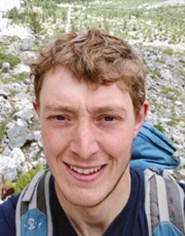
I’m a river scientist, white water kayaker and generally a river nerd! Rivers are humbling, their power awe-inspiring, and attempts to understand the intricacy of their processes, challenging. My research considers the interactions between physical processes (water and sediment) and biological processes (plants and animals). I work across scales from the effects of tiny insects on the transport of sand grains, up to catchment–scale fluvial, glacial and biological drivers of rivers. Whilst the immense power of water during floods is a dominant force shaping rivers, plants and animals work behind the scenes- setting the stage for the next act.
I am driven by a belief that building healthy and resilient rivers is key to managing water resources and improving the prospects of the plants and animals (including humans) that depend on rivers. Therefore, I am especially interested in the application of scientific study to river management and I maintain a strong applied focus to my research. I work closely with stakeholders to increase understanding of nature-based restoration.
Every day spent in a river is a learning experience. I take every opportunity to explore rivers in any capacity, as a kayaker or researcher. I am keen to work with other river enthusiasts, so if you are a potential student or collaborator, please get in touch! You can also see my research, open-access, at https://www.researchgate.net/profile/Rich-Mason-2 or follow for updates on Twitter @RiccoMason.
Some of my ongoing projects are described below.
I am currently working on an early career research fellowship, focusing on techniques to restore connectivity between rivers and the valley-floor (e.g. restoration to Stage Zero). During this work, I am lucky to be collaborating with academic colleagues and practitioners in Sweden, the UK and USA. This project’s work packages include:
(1) Physical modelling of rivers in laboratory flumes at the University of Hull, UK. In this work, we hope to better understand the hydrological and geomorphological effects of incision, the role of biology and to enable better restoration of incised rivers.
(2) Monitoring of Stage Zero river restoration projects. I am working to understand the effects of novel restoration on river and floodplain processes.
(3) Geospatial analyses of completed restoration projects, working alongside colleagues at Utah State University, USA.
Alongside Dr. Lina Polvi Sjöberg I study boulder-bed rivers in the paraglacial landscape of northern Sweden. I am interested in boulders as drivers of geomorphic processes, how river channels adapt to the presence of glacial legacy sediments, and how we can restore these environments following extensive timber floating. Please check out our recent papers on these rivers.
My PhD at Loughborough University focused on Caddisfly larvae: small aquatic insects. I used flume and field experiments to study how caddisfly move sediment around in rivers, and use silk (akin to spider silk) to secure sediment to the riverbed. Not all ecosystem engineers are as large as beavers.
In fact, invertebrates, although small, surpass fish and mammals in terms of total biomass and exhibit many behaviours which are highly effective at engineering river sediments. In my continuation of this work, I am particularly interested in how we can use animals, including insects, as tools to inform and improve the restoration of geomorphological and ecological processes in rivers. Interpreting rivers from a bugs-eye-view gives you a different and valuable perspective on river management.